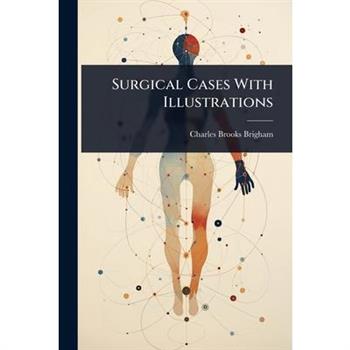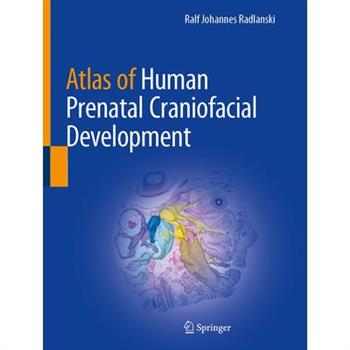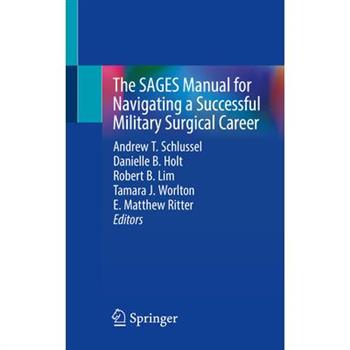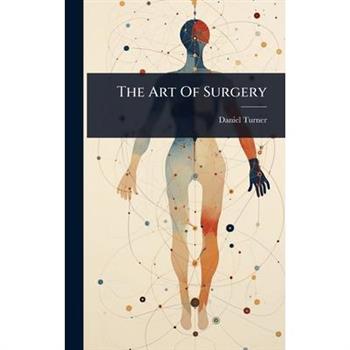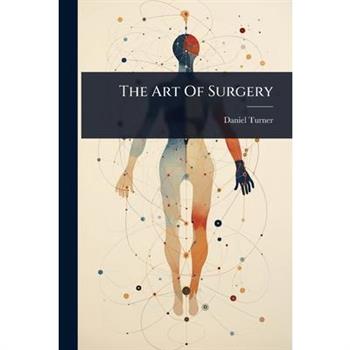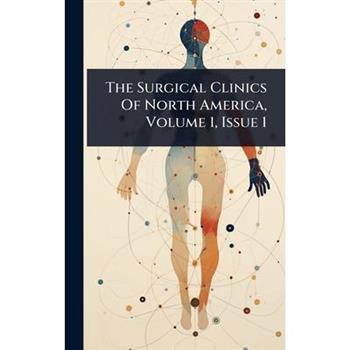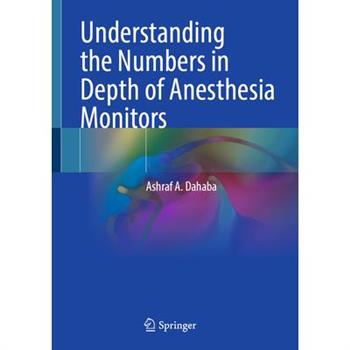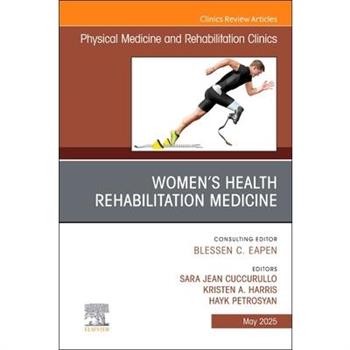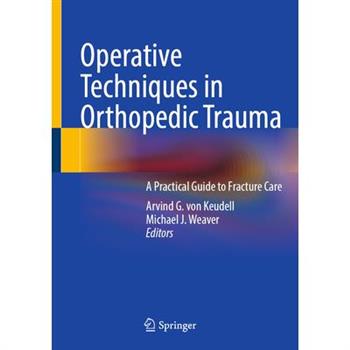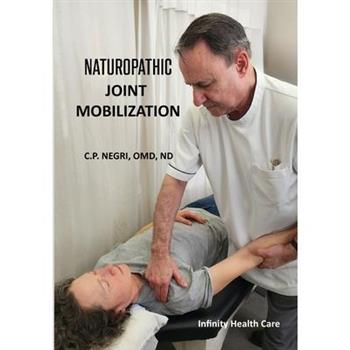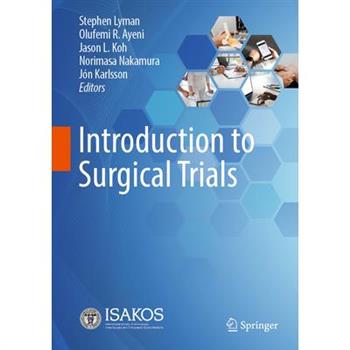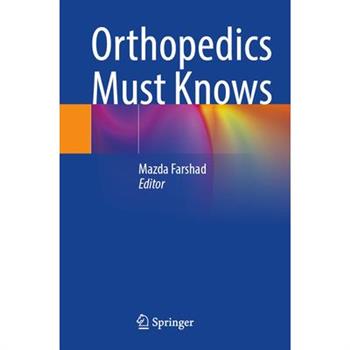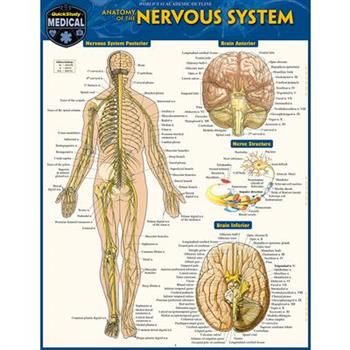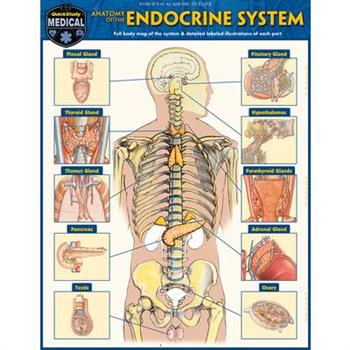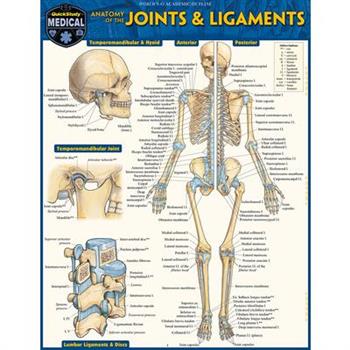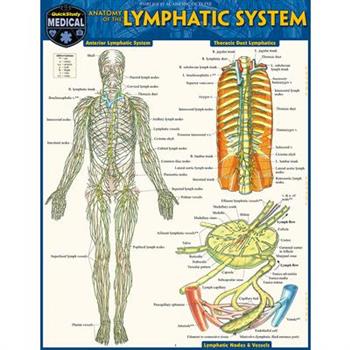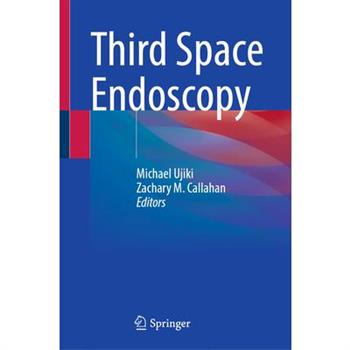Surgical Cases With Illustrations
"Surgical Cases With Illustrations" by Charles Brooks Brigham offers a detailed look into surgical practices of the late 19th century. This historical text presents a series of surgical cases, meticulously documented and enhanced with illustrative figures. Brigham璽€(TM)s work provides valuable insights into the diagnostic and therapeutic approaches prevalent during that era, serving as a reference for medical historians and those interested in the evolution of surgical techniques. The book showcases the detailed observations and methodologies employed by surgeons of the time. Each case is presented with careful attention to detail, making it a significant resource for understanding the history of medicine and surgery.This work has been selected by scholars as being culturally important, and is part of the knowledge base of civilization as we know it. This work was reproduced from the original artifact, and remains as true to the original work as possible. Therefore, you will see the original copyright references, library stamps (as most of these works have been housed in our most important libraries around the world), and other notations in the work.This work is in the public domain in the United States of America, and possibly other nations. Within the United States, you may freely copy and distribute this work, as no entity (individual or corporate) has a copyright on the body of the work.As a reproduction of a historical artifact, this work may contain missing or blurred pages, poor pictures, errant marks, etc. Scholars believe, and we concur, that this work is important enough to be preserved, reproduced, and made generally available to the public. We appreciate your support of the preservation process, and thank you for being an important part of keeping this knowledge alive and relevant.
Intestinal Surgery
Intestinal Surgery, authored by the distinguished surgeon Nicholas Senn and originally published in 1889, offers a comprehensive overview of surgical techniques and practices relevant to the late 19th century. This detailed exploration of intestinal procedures provides invaluable insights into the historical development of surgical medicine. Senn's meticulous descriptions and analyses make this work essential reading for historians of medicine, surgeons, and anyone interested in the evolution of gastroenterological practices. This book documents now-historical procedures and provides context for modern surgical approaches.This work has been selected by scholars as being culturally important, and is part of the knowledge base of civilization as we know it. This work was reproduced from the original artifact, and remains as true to the original work as possible. Therefore, you will see the original copyright references, library stamps (as most of these works have been housed in our most important libraries around the world), and other notations in the work.This work is in the public domain in the United States of America, and possibly other nations. Within the United States, you may freely copy and distribute this work, as no entity (individual or corporate) has a copyright on the body of the work.As a reproduction of a historical artifact, this work may contain missing or blurred pages, poor pictures, errant marks, etc. Scholars believe, and we concur, that this work is important enough to be preserved, reproduced, and made generally available to the public. We appreciate your support of the preservation process, and thank you for being an important part of keeping this knowledge alive and relevant.
Essentials of Legal Medicine, Toxicology and Hygiene
"Essentials of Legal Medicine, Toxicology and Hygiene" by Charles Edward Armand Semple offers a comprehensive overview of these intertwined fields as understood in the late 19th century. This historical text delves into the principles of legal medicine, exploring the intersection of medical knowledge and the law. It provides insights into the detection and effects of various poisons and toxins, crucial knowledge for both medical practitioners and legal professionals of the time. Additionally, the book addresses aspects of public health and hygiene, reflecting the growing awareness of sanitation and disease prevention during this period. This work serves as a valuable resource for those interested in the history of medicine, forensic science, and the evolution of public health practices. A significant contribution to understanding the development of medical jurisprudence, toxicology, and hygiene in the late 19th century.This work has been selected by scholars as being culturally important, and is part of the knowledge base of civilization as we know it. This work was reproduced from the original artifact, and remains as true to the original work as possible. Therefore, you will see the original copyright references, library stamps (as most of these works have been housed in our most important libraries around the world), and other notations in the work.This work is in the public domain in the United States of America, and possibly other nations. Within the United States, you may freely copy and distribute this work, as no entity (individual or corporate) has a copyright on the body of the work.As a reproduction of a historical artifact, this work may contain missing or blurred pages, poor pictures, errant marks, etc. Scholars believe, and we concur, that this work is important enough to be preserved, reproduced, and made generally available to the public. We appreciate your support of the preservation process, and thank you for being an important part of keeping this knowledge alive and relevant.
Quain’s Elements of Anatomy, Volume 1, Part 2
"Quain's Elements of Anatomy, Volume 1, Part 2" offers a detailed exploration of human anatomy as understood in the late 19th century. Written by Jones Quain, this volume provides a comprehensive overview of anatomical structures and their functions. Intended as both a reference and a study guide, the book delves into intricate details, making it a valuable resource for medical students, practitioners, and anyone interested in the field of anatomy. This historical text showcases the state of medical knowledge at the time and remains relevant for those studying the history of medicine and anatomical science. It provides a fascinating insight into the foundations upon which modern medical understanding is built.This work has been selected by scholars as being culturally important, and is part of the knowledge base of civilization as we know it. This work was reproduced from the original artifact, and remains as true to the original work as possible. Therefore, you will see the original copyright references, library stamps (as most of these works have been housed in our most important libraries around the world), and other notations in the work.This work is in the public domain in the United States of America, and possibly other nations. Within the United States, you may freely copy and distribute this work, as no entity (individual or corporate) has a copyright on the body of the work.As a reproduction of a historical artifact, this work may contain missing or blurred pages, poor pictures, errant marks, etc. Scholars believe, and we concur, that this work is important enough to be preserved, reproduced, and made generally available to the public. We appreciate your support of the preservation process, and thank you for being an important part of keeping this knowledge alive and relevant.
Essentials of Legal Medicine, Toxicology and Hygiene
"Essentials of Legal Medicine, Toxicology and Hygiene" by Charles Edward Armand Semple offers a comprehensive overview of these intertwined fields as understood in the late 19th century. This historical text delves into the principles of legal medicine, exploring the intersection of medical knowledge and the law. It provides insights into the detection and effects of various poisons and toxins, crucial knowledge for both medical practitioners and legal professionals of the time. Additionally, the book addresses aspects of public health and hygiene, reflecting the growing awareness of sanitation and disease prevention during this period. This work serves as a valuable resource for those interested in the history of medicine, forensic science, and the evolution of public health practices. A significant contribution to understanding the development of medical jurisprudence, toxicology, and hygiene in the late 19th century.This work has been selected by scholars as being culturally important, and is part of the knowledge base of civilization as we know it. This work was reproduced from the original artifact, and remains as true to the original work as possible. Therefore, you will see the original copyright references, library stamps (as most of these works have been housed in our most important libraries around the world), and other notations in the work.This work is in the public domain in the United States of America, and possibly other nations. Within the United States, you may freely copy and distribute this work, as no entity (individual or corporate) has a copyright on the body of the work.As a reproduction of a historical artifact, this work may contain missing or blurred pages, poor pictures, errant marks, etc. Scholars believe, and we concur, that this work is important enough to be preserved, reproduced, and made generally available to the public. We appreciate your support of the preservation process, and thank you for being an important part of keeping this knowledge alive and relevant.
Nerves of the Human Body
Nerves of the Human Body, by Alfred William Hughes, offers a detailed exploration of the nervous system. Published in 1890, this historical text provides insights into the anatomical structure and physiological function of nerves, reflecting the scientific understanding of the late 19th century. Hughes meticulously describes the various components of the nervous system, offering a comprehensive resource for students and practitioners of medicine. This book remains valuable for those interested in the history of medicine and the evolution of neurological science. It provides a detailed look into the medical knowledge of the time. This work has been selected by scholars as being culturally important, and is part of the knowledge base of civilization as we know it. This work was reproduced from the original artifact, and remains as true to the original work as possible. Therefore, you will see the original copyright references, library stamps (as most of these works have been housed in our most important libraries around the world), and other notations in the work.This work is in the public domain in the United States of America, and possibly other nations. Within the United States, you may freely copy and distribute this work, as no entity (individual or corporate) has a copyright on the body of the work.As a reproduction of a historical artifact, this work may contain missing or blurred pages, poor pictures, errant marks, etc. Scholars believe, and we concur, that this work is important enough to be preserved, reproduced, and made generally available to the public. We appreciate your support of the preservation process, and thank you for being an important part of keeping this knowledge alive and relevant.
Putting Plastic Surgery on Paper
An interdisciplinary approach to medical history that shows the key role that drawings and photographs had in shaping the material, professional, emotional and aesthetic parameters of plastic surgery. Plastic surgery in twentieth-century Britain was a medical discipline with deep ties to art, artists and art history. It was also a field still in the process of creating its reputation and its archives. Putting Plastic Surgery on Paper examines these archives, focusing in particular on the works on paper held within these collections by two artists: Diana "Dickie" Orpen and Percy Hennell. Plastic surgeons depended upon the drawings and photographs made by these and other medical illustrators to craft certain narratives about their field and their surgical practice. In addition to telling an art history of plastic surgery during this period, Putting Plastic Surgery on Paper engages with the affective parameters of archival objects, and with what working as a historian involves when done within potentially traumatic spaces. Paying particular attention to the emotional dimensions and effects of this visual culture and the ways in which it is archived and framed by the discipline of plastic surgery - then and now - Putting Plastic Surgery on Paper explores not only what it meant to make art in a surgical space, but also what it means to study these affecting paper objects in the archive today. This book is available as Open Access under the Creative Commons license CC BY-NC-ND.
Surgical Cases With Illustrations
"Surgical Cases With Illustrations" by Charles Brooks Brigham offers a detailed look into surgical practices of the late 19th century. This historical text presents a series of surgical cases, meticulously documented and enhanced with illustrative figures. Brigham璽€(TM)s work provides valuable insights into the diagnostic and therapeutic approaches prevalent during that era, serving as a reference for medical historians and those interested in the evolution of surgical techniques. The book showcases the detailed observations and methodologies employed by surgeons of the time. Each case is presented with careful attention to detail, making it a significant resource for understanding the history of medicine and surgery.This work has been selected by scholars as being culturally important, and is part of the knowledge base of civilization as we know it. This work was reproduced from the original artifact, and remains as true to the original work as possible. Therefore, you will see the original copyright references, library stamps (as most of these works have been housed in our most important libraries around the world), and other notations in the work.This work is in the public domain in the United States of America, and possibly other nations. Within the United States, you may freely copy and distribute this work, as no entity (individual or corporate) has a copyright on the body of the work.As a reproduction of a historical artifact, this work may contain missing or blurred pages, poor pictures, errant marks, etc. Scholars believe, and we concur, that this work is important enough to be preserved, reproduced, and made generally available to the public. We appreciate your support of the preservation process, and thank you for being an important part of keeping this knowledge alive and relevant.
Aphorisms in Applied Anatomy
"Aphorisms in Applied Anatomy" by Thomas Cooke offers a concise and insightful collection of anatomical principles as they relate to surgical practice. Published in 1891, this work provides a snapshot of medical knowledge and teaching methods of the late 19th century. Presented in an easily digestible format, the book encapsulates key anatomical concepts in succinct, memorable statements, making it a valuable resource for students and practitioners alike.Cooke's approach emphasizes the practical application of anatomical knowledge, bridging the gap between theoretical understanding and real-world surgical scenarios. This historical text offers a unique perspective on the evolution of medical education and the enduring importance of anatomical understanding in surgical skill.This work has been selected by scholars as being culturally important, and is part of the knowledge base of civilization as we know it. This work was reproduced from the original artifact, and remains as true to the original work as possible. Therefore, you will see the original copyright references, library stamps (as most of these works have been housed in our most important libraries around the world), and other notations in the work.This work is in the public domain in the United States of America, and possibly other nations. Within the United States, you may freely copy and distribute this work, as no entity (individual or corporate) has a copyright on the body of the work.As a reproduction of a historical artifact, this work may contain missing or blurred pages, poor pictures, errant marks, etc. Scholars believe, and we concur, that this work is important enough to be preserved, reproduced, and made generally available to the public. We appreciate your support of the preservation process, and thank you for being an important part of keeping this knowledge alive and relevant.
Dr Podcast Scripts for the Final Frca
Widely popular amongst exam candidates, Dr Podcast Scripts is a great way to revise for your Final FRCA. Providing questions and model answers spanning the breadth of the exam syllabus and fully updated in this second edition, this revision aid allows you to experience the format of questions likely to be asked and it provides tips on how to excel in the exam. Supplemented with helpful illustrations to explain answers, you will learn what to expect in the exam and how differently worded questions on the same topic require modified approaches. Written and updated by successful candidates providing insight and experience of the exam, all the material has been reviewed by experienced consultants with detailed knowledge of the educational standards. If you are preparing for your Final FRCA exam, Dr Podcast Scripts for the Final FRCA is a must!
The Art Of Surgery
"The Art Of Surgery" by Daniel Turner offers a detailed exploration of surgical practices as understood in the 18th century. Presented in two volumes, this work provides a comprehensive overview of surgical knowledge, techniques, and approaches prevalent during the period. It serves as a valuable historical record, illustrating the evolution of medical science and surgical methodology. Turner's book offers insights into the challenges and innovations of early surgical interventions, making it an essential resource for historians of medicine, students of surgical history, and anyone interested in the development of medical practices. Readers will gain a unique perspective on the foundations of modern surgery through the detailed descriptions and historical context provided.This work has been selected by scholars as being culturally important, and is part of the knowledge base of civilization as we know it. This work was reproduced from the original artifact, and remains as true to the original work as possible. Therefore, you will see the original copyright references, library stamps (as most of these works have been housed in our most important libraries around the world), and other notations in the work.This work is in the public domain in the United States of America, and possibly other nations. Within the United States, you may freely copy and distribute this work, as no entity (individual or corporate) has a copyright on the body of the work.As a reproduction of a historical artifact, this work may contain missing or blurred pages, poor pictures, errant marks, etc. Scholars believe, and we concur, that this work is important enough to be preserved, reproduced, and made generally available to the public. We appreciate your support of the preservation process, and thank you for being an important part of keeping this knowledge alive and relevant.
The Mechanism Of The Gubernaculum Testis. Prize Thesis
"The Mechanism Of The Gubernaculum Testis" by John Cleland presents a detailed exploration of the gubernaculum testis, a crucial structure in testicular descent. This prize-winning thesis delves into the anatomical and physiological aspects of this mechanism, offering valuable insights into reproductive biology. Cleland's work provides a foundational understanding of the processes involved, making it an essential resource for students and researchers in anatomy, reproductive medicine, and related fields. This historical text remains relevant for its meticulous approach to understanding a complex biological system.This work has been selected by scholars as being culturally important, and is part of the knowledge base of civilization as we know it. This work was reproduced from the original artifact, and remains as true to the original work as possible. Therefore, you will see the original copyright references, library stamps (as most of these works have been housed in our most important libraries around the world), and other notations in the work.This work is in the public domain in the United States of America, and possibly other nations. Within the United States, you may freely copy and distribute this work, as no entity (individual or corporate) has a copyright on the body of the work.As a reproduction of a historical artifact, this work may contain missing or blurred pages, poor pictures, errant marks, etc. Scholars believe, and we concur, that this work is important enough to be preserved, reproduced, and made generally available to the public. We appreciate your support of the preservation process, and thank you for being an important part of keeping this knowledge alive and relevant.
Arsenic As A Domestic Poison
Explore the chilling history of arsenic as a readily available and frequently used domestic poison in this meticulously researched study. Delving into 19th-century society, this book examines the ease with which arsenic could be obtained and its devastating impact on families and communities. 璽€œArsenic As A Domestic Poison璽€ offers a fascinating, if unsettling, look at a dark chapter in the history of crime and medicine. Discover the methods of detection, the motives behind the poisonings, and the social conditions that allowed such crimes to flourish.This work has been selected by scholars as being culturally important, and is part of the knowledge base of civilization as we know it. This work was reproduced from the original artifact, and remains as true to the original work as possible. Therefore, you will see the original copyright references, library stamps (as most of these works have been housed in our most important libraries around the world), and other notations in the work.This work is in the public domain in the United States of America, and possibly other nations. Within the United States, you may freely copy and distribute this work, as no entity (individual or corporate) has a copyright on the body of the work.As a reproduction of a historical artifact, this work may contain missing or blurred pages, poor pictures, errant marks, etc. Scholars believe, and we concur, that this work is important enough to be preserved, reproduced, and made generally available to the public. We appreciate your support of the preservation process, and thank you for being an important part of keeping this knowledge alive and relevant.
Arsenic As A Domestic Poison
Explore the chilling history of arsenic as a readily available and frequently used domestic poison in this meticulously researched study. Delving into 19th-century society, this book examines the ease with which arsenic could be obtained and its devastating impact on families and communities. 璽€œArsenic As A Domestic Poison璽€ offers a fascinating, if unsettling, look at a dark chapter in the history of crime and medicine. Discover the methods of detection, the motives behind the poisonings, and the social conditions that allowed such crimes to flourish.This work has been selected by scholars as being culturally important, and is part of the knowledge base of civilization as we know it. This work was reproduced from the original artifact, and remains as true to the original work as possible. Therefore, you will see the original copyright references, library stamps (as most of these works have been housed in our most important libraries around the world), and other notations in the work.This work is in the public domain in the United States of America, and possibly other nations. Within the United States, you may freely copy and distribute this work, as no entity (individual or corporate) has a copyright on the body of the work.As a reproduction of a historical artifact, this work may contain missing or blurred pages, poor pictures, errant marks, etc. Scholars believe, and we concur, that this work is important enough to be preserved, reproduced, and made generally available to the public. We appreciate your support of the preservation process, and thank you for being an important part of keeping this knowledge alive and relevant.
The Mechanism Of The Gubernaculum Testis. Prize Thesis
"The Mechanism Of The Gubernaculum Testis" by John Cleland presents a detailed exploration of the gubernaculum testis, a crucial structure in testicular descent. This prize-winning thesis delves into the anatomical and physiological aspects of this mechanism, offering valuable insights into reproductive biology. Cleland's work provides a foundational understanding of the processes involved, making it an essential resource for students and researchers in anatomy, reproductive medicine, and related fields. This historical text remains relevant for its meticulous approach to understanding a complex biological system.This work has been selected by scholars as being culturally important, and is part of the knowledge base of civilization as we know it. This work was reproduced from the original artifact, and remains as true to the original work as possible. Therefore, you will see the original copyright references, library stamps (as most of these works have been housed in our most important libraries around the world), and other notations in the work.This work is in the public domain in the United States of America, and possibly other nations. Within the United States, you may freely copy and distribute this work, as no entity (individual or corporate) has a copyright on the body of the work.As a reproduction of a historical artifact, this work may contain missing or blurred pages, poor pictures, errant marks, etc. Scholars believe, and we concur, that this work is important enough to be preserved, reproduced, and made generally available to the public. We appreciate your support of the preservation process, and thank you for being an important part of keeping this knowledge alive and relevant.
The Art Of Surgery
"The Art Of Surgery" by Daniel Turner offers a detailed exploration of surgical practices as understood in the 18th century. Presented in two volumes, this work provides a comprehensive overview of surgical knowledge, techniques, and approaches prevalent during the period. It serves as a valuable historical record, illustrating the evolution of medical science and surgical methodology. Turner's book offers insights into the challenges and innovations of early surgical interventions, making it an essential resource for historians of medicine, students of surgical history, and anyone interested in the development of medical practices. Readers will gain a unique perspective on the foundations of modern surgery through the detailed descriptions and historical context provided.This work has been selected by scholars as being culturally important, and is part of the knowledge base of civilization as we know it. This work was reproduced from the original artifact, and remains as true to the original work as possible. Therefore, you will see the original copyright references, library stamps (as most of these works have been housed in our most important libraries around the world), and other notations in the work.This work is in the public domain in the United States of America, and possibly other nations. Within the United States, you may freely copy and distribute this work, as no entity (individual or corporate) has a copyright on the body of the work.As a reproduction of a historical artifact, this work may contain missing or blurred pages, poor pictures, errant marks, etc. Scholars believe, and we concur, that this work is important enough to be preserved, reproduced, and made generally available to the public. We appreciate your support of the preservation process, and thank you for being an important part of keeping this knowledge alive and relevant.
The Surgical Clinics Of North America, Volume 1, Issue 1
Explore the early landscape of surgical practices in 璽€œThe Surgical Clinics Of North America, Volume 1, Issue 1.璽€ This inaugural issue offers a snapshot of the surgical knowledge and techniques prevalent at the time, providing invaluable insights into the evolution of modern surgical methods. A must-read for medical historians, surgeons, and anyone interested in the historical roots of today's medical procedures.This work has been selected by scholars as being culturally important, and is part of the knowledge base of civilization as we know it. This work was reproduced from the original artifact, and remains as true to the original work as possible. Therefore, you will see the original copyright references, library stamps (as most of these works have been housed in our most important libraries around the world), and other notations in the work.This work is in the public domain in the United States of America, and possibly other nations. Within the United States, you may freely copy and distribute this work, as no entity (individual or corporate) has a copyright on the body of the work.As a reproduction of a historical artifact, this work may contain missing or blurred pages, poor pictures, errant marks, etc. Scholars believe, and we concur, that this work is important enough to be preserved, reproduced, and made generally available to the public. We appreciate your support of the preservation process, and thank you for being an important part of keeping this knowledge alive and relevant.
Appendicitis - Current Insights
This book provides a comprehensive and up-to-date examination of appendicitis, a condition that continues to present challenges to medical professionals worldwide. It explores the latest developments in minimally invasive surgical techniques, non-surgical treatment options, and the emerging role of artificial intelligence in diagnosis and treatment. Readers are offered global insights into disparities in healthcare access, particularly in rural areas of developing countries, with personal accounts that illustrate the real-life experiences of patients. The book also takes a holistic approach to the diagnosis and management of appendicitis in both children and adults, offering a complete overview of this common surgical condition. It serves as a valuable resource for surgeons, pediatricians, gastroenterologists, emergency medicine physicians, medical students, researchers, and anyone interested in gaining a deeper understanding of appendicitis.
Perioperative Pediatric Patient Blood Management and Transfusion Safety
This case-based book is focused on perioperative pediatric PBM and blood transfusion safety, while addressing a number of patient management issues. Divided into three sections covering all phases of perioperative care, each chapter consists of a stem question, followed by an analysis of the issue, then a discussion of the current evidence in the literature. Rather than being a transfusion-related book written by pathologists and laboratory specialists, chapters are authored by highly specialized clinicians who will write from first-hand experience in addition to an exploration of the current literature. The book features management summaries of topics with scant or only recently available evidence and offers novel content and format in the pediatric patient literature. Perioperative Pediatric Patient Blood Management and Transfusion Safety is an informative guide for any clinician that treats a child before, during, or after a blood loss surgery.
Understanding the Numbers in Depth of Anesthesia Monitors
Is there a unified definition of anesthesia? What exactly are we monitoring? Processed electroencephalography (pEEG) monitors may not reliably assess all anesthetic endpoints. This book explains how anesthesiologists should not blindly follow the displayed numbers when they adjust their anesthetic agents' doses. This book is based on the author's 30 years of experience researching the topic of Depth of Anesthesia (DOA) monitoring. Depth of Anesthesia monitors are pEEG Monitors. All conditions that would alter the EEG (these are many) would also alter the DOA displayed numbers so each reader should learn how to correctly interpret the displayed numbers. In many instances physicians are confronted with various paradoxical Depth of Anesthesia monitors displaying inaccurate readings that do not concur with "clinically judged Anesthetic state" whether arising from an underlying pathophysiology alteration of the patients' own EEG cerebral function or those due to shortcomings in the performance and design of the DoA. This book - very easy to read although the topic sounds very complicated - would like to represent a reference where anesthesiologists can go back to when they are confronted with such situations. Each chapter is focused on one contributing element that could influence depth of anesthesia monitoring. It reports cases or studies of displayed numbers that do not concur with clinically assessed depth of anesthesia; these are immediately followed by the documented scientific EEG explanations. A book that both younger and older anesthetists should read to better understand how to use DOA monitors in their daily practice and that very much simplifies the topic.
Women's Health Rehabilitation Medicine, an Issue of Physical Medicine and Rehabilitation Clinics of North America
In this issue of Physical Medicine and Rehabilitation Clinics, guest editors Drs. Sara Cuccurullo, Kristen Harris, and Hayk Petrosyan bring their considerable expertise to the topic of Women's Health Rehabilitation Medicine. Top experts in the field discuss specific issues related to women's health within the field of rehabilitation medicine, and current treatment paradigms for both musculoskeletal and neurologic topics.Contains 13 relevant, practice-oriented topics including the role of rehabilitation for women with cancer; pelvic pain and pelvic floor disorders in women; considerations for long COVID rehabilitation in women; common pain disorders in women; and moreProvides in-depth clinical reviews on women's health rehabilitation medicine, offering actionable insights for clinical practicePresents the latest information on this timely, focused topic under the leadership of experienced editors in the field. Authors synthesize and distill the latest research and practice guidelines to create clinically significant, topic-based reviews
Master Techniques in Rhinoplasty
Concise yet comprehensive, Master Techniques in Rhinoplasty, 2nd Edition, allows you to tap into the knowledge and expertise of leading reconstructive and cosmetic plastic surgeons to achieve the results your patients expect. This multimedia resource provides expert guidance from Drs. Babak Azizzadeh, Paul S. Nassif, Grace Lee Peng, William Numa, Calvin Johnson, Jr., Mark R. Murphy, and other renowned surgeons who guide you through open and endonasal primary and secondary rhinoplasty techniques. Step-by-step procedures, color line drawings, intraoperative photographs, and narrated videos help you master the nuances of each technique, avoid pitfalls, manage complications, and optimize results for every patient.Provides essential information in a templated format for each procedure: history, personal philosophy, anatomy, preoperative analysis, technique, postoperative care, and complication avoidance-all the information you need to get the best outcomes.Features significantly updated content throughout, including new line drawings and intraoperative photographs, new expert contributors, new secondary rhinoplasty cases, and new narrated videos that allow you to watch master surgeons perform techniques.Contains more than 40 new chapters, including the most advanced preservation rhinoplasty techniques. Chapters include Nasal Surface Aesthetics, Photography and Imaging in Rhinoplasty, Long-Term Results in Rhinoplasty, Technology in Rhinoplasty, Ethnic Considerations in Rhinoplasty, Revision Endonasal Rhinoplasty, Non-Surgical Rhinoplasty, Correction of Nasal Tip Deficiency, Avoiding Complications in Alar Base Reduction, Septoplasty: Basics to Advanced, and many more.Help you choose the most promising approach based on multiple expert viewpoints on the advantages and disadvantages of each approach.An eBook version is included with purchase. The eBook allows you to access all of the text, figures and references, with the ability to search, customize your content, make notes and highlights, and have content read aloud. Additional digital ancillary content may publish up to 6 weeks following the publication date.
The Deformities Of The Fingers And Toes
Unlock the secrets of a forgotten medical masterpiece with "The Deformities of the Fingers and Toes" by William Anderson, now revived after decades out of print. This timeless work, republished by Alpha Editions, is not just a reprint it's a collector's item and a cultural treasure, meticulously restored for today's and future generations. Dive into the fascinating exploration of human anatomy and medical history, where Anderson's pioneering insights illuminate the complexities of finger and toe deformities with clarity and precision. This unique volume stands out for its blend of scientific rigor and historical significance, offering readers a rare glimpse into the medical practices of the past. Whether you're a casual reader intrigued by the evolution of medical knowledge or a collector of classic literature, this book promises to captivate and inspire. Experience the enduring value of Anderson's work, now beautifully presented for a new era of discovery. Don't miss the chance to own a piece of history that bridges the gap between past and present, enriching your understanding of the human body and the art of healing.
The Anaesthesia Science Viva Book
The fourth edition of the highly successful The Anaesthesia Science Viva Book provides detailed, accessible summaries of the core questions in anatomy, physiology, pharmacology, and clinical measurement and equipment that may be covered in the oral part of the Final FRCA exam. In addition to a comprehensive update, this edition includes new subject material in each of the four basic sciences, with over 200 condensed summaries of the most relevant topics in the examination. Continuing to offer candidates an insight into the way the viva works, the book provides general guidance on examination technique, and readily accessible information relating to a wide range of potential questions. Written by a former senior examiner for the Diploma of the Fellowship of the Royal College of Anaesthetists, with previous editions recommended by Anaesthesia UK, formerly a prime educational resource for trainee anaesthetists, the book remains an essential purchase for every Final FRCA candidate.
Keep Your Mind Sharp! Activity Book for Seniors
Keep Your Mind Sharp! Activity Book for Seniors 300 Large-Print Activities to Support Memory, Focus, and Cognitive Skills in Older Adults Keep Your Mind Sharp! is a thoughtfully created activity book designed to support seniors and adults who want to keep their minds active and engaged. Using adult-level vocabulary and real-life conversational themes, this book offers stimulating exercises that promote memory, attention, logical thinking, and communication skills. Ideal for individuals, families, and caregivers looking to encourage brain wellness and cognitive engagement in a fun, meaningful way. This book is a practical companion for maintaining mental agility and fine motor coordination.Inside you'll find: 300 carefully crafted activities with varying levels of challengeLarge-print format for easy readability and reduced eye strainExercises that enhance memory, focus, visual-spatial awareness, and problem-solving skillsFine motor skill activities designed especially for adults and seniorsReal-life inspired tasks to encourage communication, connection, and enjoyment More than just a puzzle book-this is a positive and empowering tool to support lifelong brain health. Perfect for seniors, family members, and caregivers looking for enjoyable ways to stay mentally vibrant. Stay sharp. Stay connected. Stay confident.
Natural Healing with the Dimethyl Sulfoxide (Dmso) Book
Natural Healing with Dimethyl Sulfoxide (DMSO)A Comprehensive Guide to Safe and Effective Relief from Pain, Inflammation, and More Unlock the healing potential of Dimethyl Sulfoxide (DMSO)-a powerful, natural compound known for its remarkable anti-inflammatory, analgesic, and cell-repairing properties. In this clear, accessible guide, you'll learn how DMSO can be used as an alternative or complementary treatment for a wide range of health conditions. This book is your essential resource for understanding and using DMSO safely and effectively. Whether you're managing chronic pain, joint disorders, skin conditions, or sports injuries, Natural Healing with DMSO offers evidence-based insight and practical advice to help you regain control of your health-naturally. Inside you'll discover: The science behind how DMSO works in the body Therapeutic uses for pain, inflammation, injuries, and more Application methods and dosage guidelines Safety precautions, interactions, and tips for optimal results Success stories and testimonials from real users With decades of research supporting its efficacy, DMSO stands out as one of nature's most versatile healing agents. This book empowers you with the knowledge to make informed decisions and explore natural healing with confidence. Reclaim your well-being-naturally-with DMSO.
Anatomy Microstructures
Loaded with meticulously detailed, beautifully illustrated microstructures of the human body clearly and concisely labeled for easy identification.Illustrations by award-winning and best-selling medical illustrator Vincent Perez, whose life mission is cataloging the beauty and detail of our complicated body systems for the medical professional, the formative student and the inquisitive layperson.6-page laminated guide includes illustrated and labeled: CellKidney: Renal CorpuscleEar: Cochlear DuctEye: Retinal Rods & ConesTongue: Taste BudsTooth: Marginal GingivaSkin & HairNose: Olfactory EpitheliumEye: Chambers & StructuresDigestive Wall Layers: Esophagus, Stomach, Small Intestines, Large IntestinesLiver: LobuleBlood Vessels: CapillaryBone: OsteonMuscles: SarcomereNerve: StructureLung: AlveolaLymphatics: Nodes & VesselsOvumSpermatogenesis & Spermatozoa
Anatomy of the Nervous System
Essential anatomy of the human body nervous system with clearly and concisely labeled illustrations with front, side, and back views in six laminated pages. With over a thousand labeled parts, there is no reference this detailed for this price anywhere else. This reference tool has been used by everyone from medical and nursing professionals, students and professors, and anyone wanting to know their body better in general for health or medical reasons. Illustrations by award-winning and best-selling medical illustrator Vincent Perez, whose life mission is cataloging the beauty and detail of our complicated body systems. A beloved artist who taught anatomical illustration at University of Northern California, Vince's love of the art and detail of human anatomy has inspired students who went on to work for Lucas Arts creature creation with Vince himself working on art for Spielberg and Jim Henson Studios. Still to Vince there is nothing more amazing than the human body we all have and this is clear in his detailed work. This guide will last a lifetime and can be stored easily for quick reference, it is a must have.
Anatomy of the Endocrine System
Essential anatomy of the human body endocrine system with clearly and concisely labeled illustrations in six laminated pages. With thousands of labeled parts, there is no reference this detailed for this price anywhere else. This reference tool has been used by medical and nursing professionals, students and professors, and anyone needing to understand their endocrine system better for health or medical reasons. Illustrations by award-winning and best-selling medical illustrator Vincent Perez, whose life mission is cataloging the beauty and detail of our complicated body systems. A beloved artist who taught anatomical illustration at University of Northern California, Vince's love of the art of anatomy has inspired students who went on to work for Lucas arts creature creation and famous comic book artists, Vince himself working on art for Spielberg and Jim Henson Studios. Everyone has a body and should know it's intricate and amazing parts. This guide will last a lifetime and can be stored easily for quick reference, it is a must have.6 page laminated guide includes illustrations and labels for: Enhanced View of Parts of the Endocrine System & Location in the BodyPineal GlandThyroid GlandThymus GlandPancreasTestisPituitary GlandHypothalamusParathyroid GlandsAdrenal GlandOvaryBrain - Medial (Sagittal) ViewPituitary GlandHypothalamusBrainstem & Pineal Gland - Posterior ViewPineal GlandBrain - Horizontal SectionThyroid GlandParathyroid GlandThymusPancreasAdrenal Glands & KidneysLeft Adrenal Gland (Suprarenal) - Anterior ViewTestisTestis in SituOvaryOvary in Situ
Anatomy of Joints & Ligaments
Essential anatomy of the human body joints and ligaments with clearly and concisely labeled illustrations of with front, side, and back views in six laminated pages. With thousands of labeled parts, there is no reference this detailed for this price anywhere else. This reference tool has been used by everyone from medical and nursing professionals, students and professors, to exercise trainers and anyone wanting to know their body better in general and for health or medical reasons. Illustrations by award-winning and best-selling medical illustrator Vincent Perez, whose life mission is cataloging the beauty and detail of our complicated body systems. A beloved artist who taught anatomical illustration at University of Northern California, Vince's love of the art and detail of human anatomy has inspired students who went on to work for Lucas Arts creature creation with Vince himself working on art for Spielberg and Jim Henson Studios. Still to Vince there is nothing more amazing than the human body we all have and this is clear in his detailed work. This guide will last a lifetime and can be stored easily for quick reference, it is a must have.6 page laminated guide includes illustrations and labels for: Temporomandibular & HyoidFull Body Anterior & Posterior ViewsTemporomandibular JointLumbar Ligaments & DiscsSpine - LateralVertebral Column - LateralCraniocervical Ligaments - PosteriorElbow Joints - LateralElbow Bones - LateralElbow Joints - LateralElbow Bones AnteriorSternoclavicular & ShoulderWrist Joints & Ligaments DorsalHand & Wrist Joints & Ligaments - PalmarFinger Joints & Ligaments - MedialHand & Wrist Bones - DorsalHand & Wrist Bones - PalmarSacropelvic Ligaments - PosteriorSacropelvic Ligaments - Anterior SuperiorHip Ligaments - AnteriorHip Ligaments - Anterior OpenedHip Bones - PosteriorHip Bones - AnteriorFoot Ligaments - PlantarFoot Bones - PlantarFoot Ligaments - LateralFoot Bones - LateralFoot Ligaments - MedialFoot Bones - MedialKnee Ligaments - AnteriorKnee Ligaments - PosteriorKnee Bones - AnteriorKnee Bones - Posterior
Anatomy of the Lymphatic System
Essential anatomy of the human body lymphatic system with clearly and concisely labeled illustrations with front, side, and back views in six laminated pages. With over a thousand labeled parts, there is no reference this detailed for this price anywhere else. This reference tool has been used by everyone from medical and nursing professionals, students and professors, and anyone wanting to know their body better in general for health or medical reasons. Illustrations by award-winning and best-selling medical illustrator Vincent Perez, whose life mission is cataloging the beauty and detail of our complicated body systems. A beloved artist who taught anatomical illustration at University of Northern California, Vince's love of the art and detail of human anatomy has inspired students who went on to work for Lucas Arts creature creation with Vince himself working on art for Spielberg and Jim Henson Studios. Still to Vince there is nothing more amazing than the human body we all have and this is clear in his detailed work. This guide will last a lifetime and can be stored easily for quick reference, it is a must have.
Atlas of Anatomy
The definitive resource for learning and teaching challenging anatomyRapid advances in medical research and technology have led to innovative medical procedures, and in turn, emerging trends in medical education. Novel developments highlight the importance of once seemingly irrelevant anatomic details, while also impacting the scope of anatomy curricula. To reflect these changes, each chapter in Atlas of Anatomy, Fifth Edition has been meticulously updated to ensure content is both relevant and reflective of the role of anatomy in contemporary medical practice.The book features seven anatomical sections with a total of 51 chapters, with updates, additions, and revisions incorporated throughout the more than 700 pages. The Table of Contents is enhanced with reader-friendly chapter and page references for all tables and clinical boxes. To mirror the current trend in muscular attachment terminology, origin and insertion are replaced with the more accurate and descriptive terms superior attachment/inferior attachment or proximal attachment/distal attachment. Over 2,100 illustrations unmatched in both the realistic depiction of anatomy and the three-dimensionality of the figures enhance recognition and memorization of structures.Key Features: NEW! Updated images reflect gender, racial, and ethnic diversityNEW! Reorganization of the neurovascular spreads in the abdomen and pelvis unitsNEW! Expansion of the sections on the female breast and perineumNEW! Added brainstem cross section layoutsNEW! A list of common eponyms with their official anatomic equivalentsLike the widely acclaimed prior editions, this stunningly illustrated textbook provides an indispensable anatomy resource for medical and physical therapy students, as well as robust classroom teaching tool for anatomy courses.This print book includes complimentary access to a digital copy on https: //medone.thieme.com.Publisher's Note: Products purchased from Third Party sellers are not guaranteed by the publisher for quality, authenticity, or access to any online entitlements included with the product.











